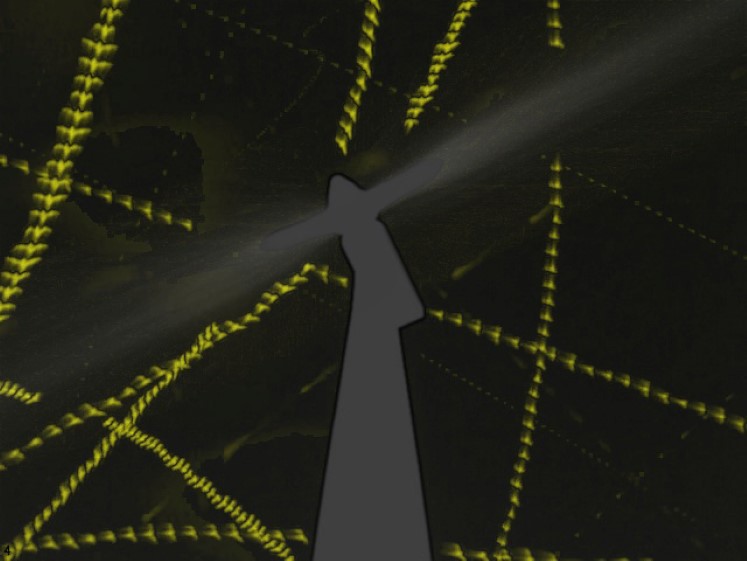By Clemens van Gessel
Thermal cameras will record bird collisions at windfarm Hollandse Kust Zuid in a test that starts this August. "We are still looking for the right technology to understand bird collision risk," said Jesper Kyed Larsen, Bioscience Expert at Vattenfall.
In spring and autumn, millions of birds migrate over the North Sea and come close to wind farms. When a large number of birds is expected to pass, the so-called start-stop procedure is activated (see box below the article), which means that Vattenfall has to shut down the wind turbines for a few hours and no power can be generated. "We want to avoid that, as far as possible," Larsen said. "If the turbines are shut down, other assets, such as gas-fired plants, have to top up to compensate for the fall in supply. The start-stop procedure is therefore announced two days in advance to organise this. The question is whether the turbines will stop at the right time, simply because it is hard to predict so long in advance exactly what route the birds will choose and how fast they will pass the area containing the wind farm."
Collecting evidence
Together with Wageningen Environmental Research, part of Wageningen University, and Wildlife Imaging Systems, a US technology solution provider, Vattenfall will trial a thermal camera-based system for collecting evidence of birds colliding with offshore wind turbines at its HKZ wind farm. "This is trickier at sea than on land, where you can walk around and see what has fallen to the ground. When a bird hits a wind turbine at sea, it falls into the water and floats away. By placing 16 thermal imaging cameras on one of the turbines, we can monitor the conditions under which a collision might occur. The cameras run 24 hours a day and look out horizontally 360 degrees below the rotor to see if anything falls down. The videos are analysed using artificial intelligence."

Bird flights around a wind turbine captured by camera systems. The image is a summary of 5 minutes of video in a single image. The yellow parts of the image are birds recorded by the software. Source: Wildlife Imaging Systems.
Vattenfall is already using cameras and artificial intelligence for monitoring of collision risk at the Scottish Aberdeen Bay Offshore Wind Farm. There, daylight cameras are used for recording the flight movements and behaviour of seabirds around the turbines, not collisions.
With all the available material, Larsen and the researchers can see whether patterns in bird activity and collisions can be identified and whether they can be related to certain weather conditions. Whereas most migrating birds normally fly over wind turbines, when the weather deteriorates during bird migration, they might be forced to fly lower.
While focussing on migration of small birds like songbirds and thrushes the study covers all bird activity and looks at bats as well.
Expectations
The prime goal of this pilot project is to test how well the thermal cameras and supporting technology works and get a more accurate fatality count. A next step could be to attach cameras to more wind turbines to get more certainty about the number of collisions and more representative figures. "This test is just the beginning," Larsen said. "Once we have more data, we can share our findings with authorities and experts, who can use it to improve their start-stop models."
Larsen is aware that results of these kinds of studies conducted by the energy sector itself are sometimes received sceptically. "I understand that very well," he explains. "That's why we don't do this research alone. We have engaged Wageningen Environmental Research as an independent research party. We also plan to invite key experts from the authorities, universities and ngo's to follow the project close-up. We want everyone to be able to use the results of the research."
Start-stop procedure
- A bird migration prediction model indicates the expected bird migration in the wind energy areas in the Dutch North Sea two days in advance in spring and autumn.
- When a bird density exceeds the threshold, a bird alert follows to all those directly involved.
- Network operator TenneT gives an advice to the Ministry of Economic Affairs and Climate. This ministry decides whether to stop wind farms and announces this with start and end times in the Government Gazette. This is a formal decision.
- Owners of wind farms stop the farms at the specified time. That is, to less than two rotations per minute because complete shutdown is not desirable for technical reasons.
- The Enforcement Department of Rijkswaterstaat (RWS), an implementing organisation of the Ministry of Infrastructure and Water Management, carries out an administrative check.
- RWS analyses the data to see whether bird migration actually took place and to further improve the prediction model.










